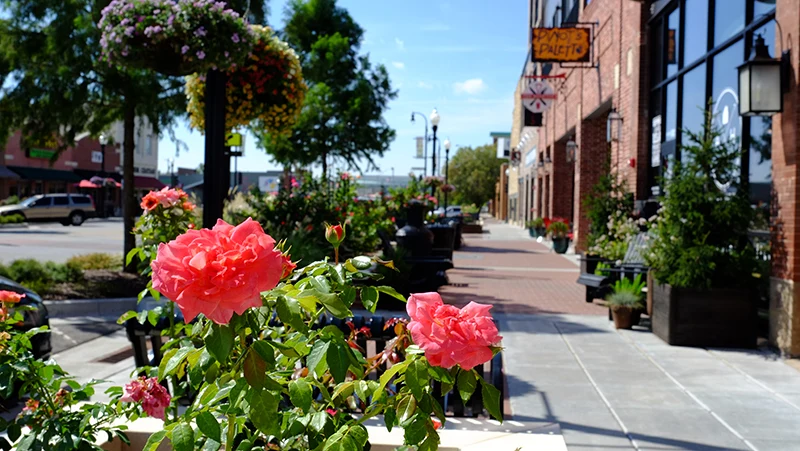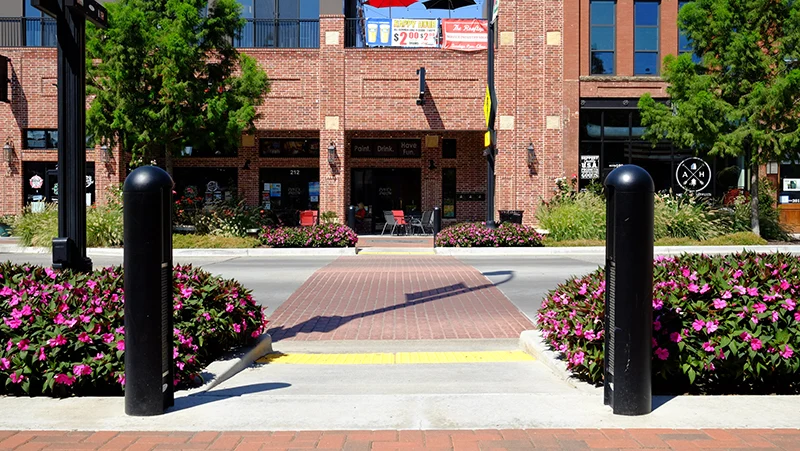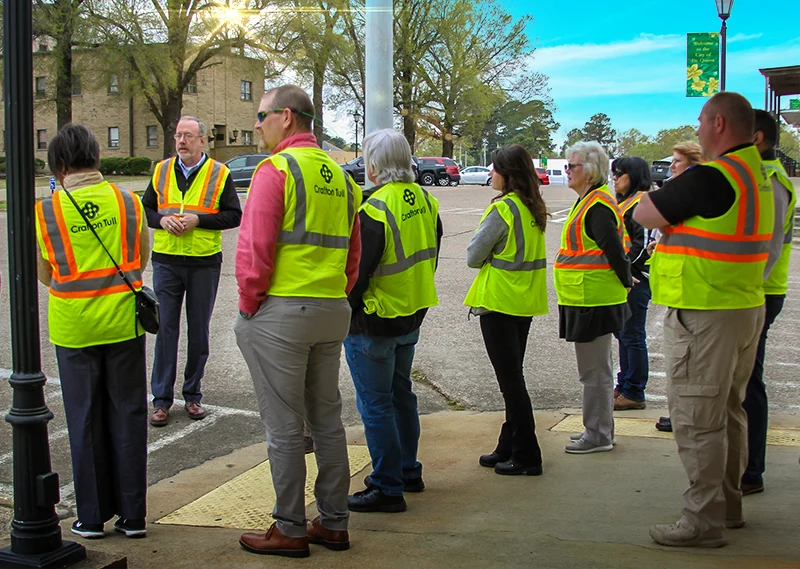
Dave Roberts, PLA, ASLA
Senior Vice President - Planning & Business DevelopmentWalking is a relative term that means foot (or wheel) transportation. My teenage daughter uses a power wheelchair for mobility and her rolling fits under the category of walking. Often bike riding falls in line with walkability as well. Many urban and suburban dwellers have the benefit of utilizing bicycles as an option for commuting to work or to other amenities. Many think of cycling only in terms of recreation, and it can be, but a bicycle is also an alternative form of (active) transportation. While some communities are well-positioned for this influx in active transportation, others may not be.
Walkability
Walkability is a planning term that measures an area’s ease of connectivity via non-vehicular transportation. Walkability speaks to a location’s walk score, which analyzes hundreds of routes to nearby amenities and produces a score based on those factors. In other words, walkability measures how friendly an area is to walking. Walkability factors include the presence or absence and quality of pedestrian facilities, amount of vehicular traffic and roadway conditions, surrounding land uses, accessibility, and user safety, among others. Sustainable urban design and walkability go hand in hand. A walk score helps us remember that streets are more than just a place for cars and trucks. A street is meant for all modes of transportation, and places with multiple mobility choices get higher walk scores. We should relish the process of transportation rather than trying to get somewhere as fast as possible. Ralph Waldo Emerson is purported to have said, “It’s not the destination, it’s the journey.” Why not gain benefits from that journey? The outcomes of a good walk score are livability, which affects economic development, safety, health, environment, quality of life, and many other community benefits.

Infrastructure barriers
When things get back to normal, post-pandemic, what will we have learned from our walks? Will we realize that our legs and lungs are stronger from it, that our mind is clearer, and our perception of our neighborhood is now different? Alternatively, will we default back to our cars, forsaking this newly found joy that has been an important part of our daily routine? Life moves so fast when it’s spent inside our glass and steel bubbles zipping from place to place. We often sacrifice so much for the sake of speed and convenience. Will we realize that our community’s walk score is low because our communities have not fully embraced their transportation options? It is never too late to make changes to your town’s built environment by adding options for active transportation. If infrastructure changes are needed, then a walkshop along with grants can help with planning, design, funding, and implementation.
Walk score
Does your community have a good walk score, or a poor one? What is the process a community takes to improve its walk score? Walk audits or Walkshops are a good first step (pun intended). Walkshops are interactive walking workshops with professional planners, community leaders, and advocates to develop placemaking concepts and solutions for alternative transportation (walking & cycling) by analyzing an area’s walkability, circulation, universal access, parking, safety, and sustainability. Often wayfinding, beautification, and community character improvements are also part of the inventory. Typically this occurs in a community’s downtown or commercial area that is often surrounded by neighborhoods.
Have you ever visited a community’s sleepy downtown and noticed it’s in virtual hibernation as if the shops have not changed in decades, assuming there are many shops to visit? These downtowns often have a few open stores, maybe a restaurant or two, usually an insurance office, a bank, perhaps a florist, and plenty of empty storefronts. Typically, few cars are present and even less foot traffic on the sidewalks. What story does that tell a visitor to the area? Is it a story of growth, resilience, and expansion, or a tale of increased vacancy and decline? How does the infrastructure that supports the downtown contribute to that story? Are the crosswalks clearly marked, curb cuts present, and in appropriate locations? What’s the quality of pavement on the downtown streets? Are there gateways into town and wayfinding to direct first-time visitors? Is the downtown walkable and does it support cycling as an alternative form of transportation? If so, is there a network in place that links your downtown to surrounding neighborhoods, parks, and schools?
I saw the downtown story of Broken Arrow, Oklahoma, dramatically change in less than five years. Their ‘Old Towne District’ was much like what is described above, with few cars and even fewer pedestrians frequenting only a handful of shops and one restaurant. It was off the beaten path (removed from I-55), seemingly a victim of big-box store displacement. The City brought in urban planners to help with a downtown master plan, and employed landscape architects and engineers to create streetscape plans that changed the district’s focus from vehicular to more pedestrian. A few developers took a risk by adding some mixed-use, e.g., retail on the first floor and apartments on upper floors on one block, a new restaurant opened, and then a bike shop and in no time – everything changed. The key was the walkability afforded by the wider sidewalks and safe crosswalks. They even added a mid-block crossing using rapid flashing beacons to alert drivers of pedestrians ready to cross the street. The City rebranded the area as the ‘Rose District, ’ giving it an identity based on the flowers in the raised planters and the baskets that hang from the new lampposts. The before and after photos are great examples of how walkability is necessary for downtown retail to thrive.

Broken Arrow Rose District

Broken Arrow Rose District midblock crossing
Walkshops, typically led by urban planners, are opportunities to share observations and provide possible infrastructure improvements. Attendees may include mayors or other elected officials, the city engineer or public works director, parks director, local healthcare agency directors, business owners, and community advocates. Those present must include people in the town that can effect change. They are the ones who need to see the issues and hear the solutions in order for commitment to take hold. There is no replacement for the firsthand experience of walking on existing streets and sidewalks to get an understanding of the issues a downtown is facing. That experience cannot be replicated from the seat of a car.

De Queen Walkshop 2019 (Center for Community Development, UCA)
A few years back, I led a walkshop in Broken Arrow’s Rose District to show off the ‘what and how’ rather than analyze what could be possible. The attendees were leaders from other communities who hoped to borrow some of the secrets they could take back to their own downtowns. After the walkshop, a technical report is often the deliverable with photos and a narrative that summarizes the on-site analysis that includes the opportunities and constraints identified at the event. The technical report may also provide funding sources and next step options, so the community leaders have a clear path toward improving their town’s transportation infrastructure. The walkshop can be the first step in changing the downtown’s story. Each of those changes will affect the community’s walk score and, more importantly, make an impact on visitors and the locals, who live, work, and play downtown. Once the COVID-19 crisis is over, downtown businesses will need extra love to get back lost revenue from lack of foot traffic or online only sales. What better way to help restore small businesses that are vital to the community than by conducting a walkshop to set improvements in motion? We are here to help cities and towns organize, mobilize, and navigate the grant process to find the funds to do just that.